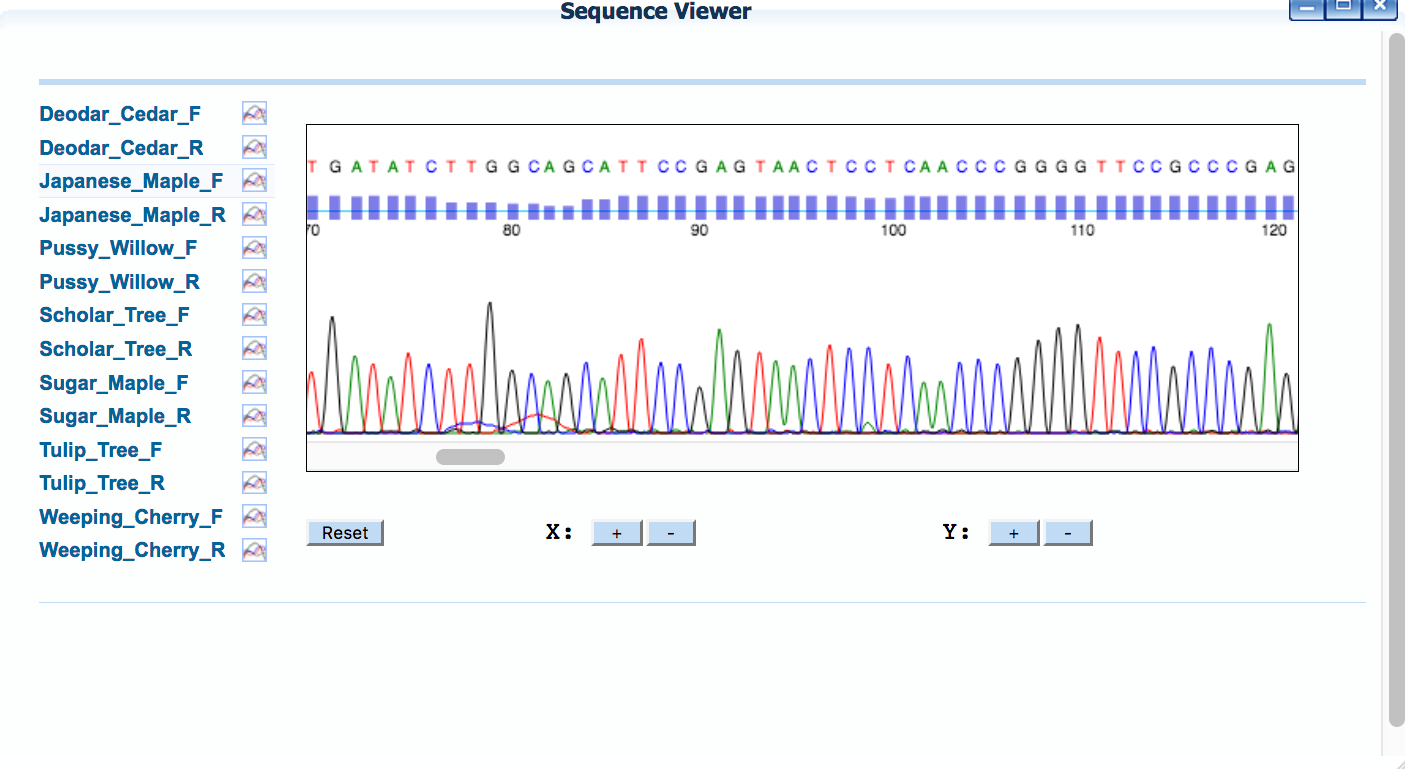Using DNA Subway to Analyze Sequence Relationships (Version 2.0)
By Jason Williams, Ray A. Enke, Oliver Hyman, Emily Lescak, Sam S Donovan, William Tapprich, and Elizabeth F Ryder

Module Description:
These are instructions for a 120-minute bioinformatics lab in which students will learn how to use the DNA Subway (http://www.dnasubway.org) Blue Line. DNA Subway is an online educational bioinformatics platform. It bundles research-grade bioinformatics tools, high-performance computing, and databases into workflows with an easy-to-use interface. The Blue Line is a workflow for analyzing DNA barcoding data to determine the taxonomic identity of an organism and examine inferred phylogenetic relationships among species. The data analyzed in this exercise is a collection of mosquito DNA sequences generated by students at James Madison University. Identification of a mosquito’s genus is important because different mosquitoes are capable of carrying different pathogens causing deadly human diseases.
Note: A natural way to divide this material may be to cover everything up to section IV (Phylogenetic Trees) in one class, leaving additional time to address trees in as much depth as desired.
Teaching Setting:
The laboratory assumes that students have an understanding of the premise of DNA barcoding, the general structure of DNA [http://www.dnaftb.org/19/index.html], basic taxonomy, and the process of Sanger sequencing [https://www.dnalc.org/resources/animations/cycseq.html].
QUBES Citation:
Williams, J., Enke, R. A., Hyman, O., Lescak, E., Donovan, S. S., Tapprich, W., Ryder, E. F. (2018). Using DNA Subway to Analyze Sequence Relationships. (Version 2.0). QUBES Educational Resources. doi:10.25334/Q4J111
|
|
Related Materials and Opportunities:
This resource was created by members of the Network for Integrating Bioinformatics into Life Sciences Education (NIBLSE; pronounced "nibbles") project. NIBLSE is a National Science Foundation (NSF) Research Coordination Network for Undergraduate Biology Education (RCN-UBE) with the long-term goal to establish bioinformatics as an essential component of undergraduate life sciences education. Learn more about NIBLSE. View the December 2018 NIBLSE Newsletter and subscribe to the NIBSLE newsletter. DNA Subway is created by the Cold Spring Harbor Laboratory DNA Learning Center through CyVerse - visit those sites for more learning materials and training opportunities.
James Madison University is hosting a free, NSF-funded five-day workshop on DNA Barcoding Course-based Undergraduate Research Experiences (CUREs) in collaboration with the Cold Spring Harbor Laboratory DNA Learning Center on June 10-14, 2019. Click here to learn more and apply.
There are currently 2 versions of this resource. The most substantial difference between the versions is the addition of the analysis of the mosquito data in Version 2.0 as a way to engage and motivate students. Review the “Notes” section of the full resource record to learn more about the differences between the 2 versions. Click on the “Versions” tab to access both versions.
This resource has been adapted for use in different settings by a group of faculty in a NIBLSE Incubator to make it more accessible to non-technical users and to sharpen the focus on bioinformatics core competencies. There are currently 2 adaptations of this resource. Both adaptations have been adapted for novices but have different content and implementation durations.
-
In Intro to DNA Barcoding by Oliver Hyman, Andrea Pesce, Elizabeth Doyle, and Ray A Enke, the activity has been shortened to fit within a 30-45 minute lecture or lab class period and includes a short pre-class assignment, a slide deck for instructors, and 2 unknown sequencing reads for students to analyze.
-
In Intro to DNA Subway Blue Line by Oliver Hyman, Andrea Pesce, Elizabeth Doyle, and Ray A Enke, the activity has been extended to fit into a 1 hour 50 minute lecture or lab class period and includes a lab activity, electronic lab notebook, slide decks for instructors, and 2 unknown sequencing reads for students to analyze.
To access both adaptations, go to the full resource record for the original resource and click on the “Adaptations” tab.
|
|
|
|
|